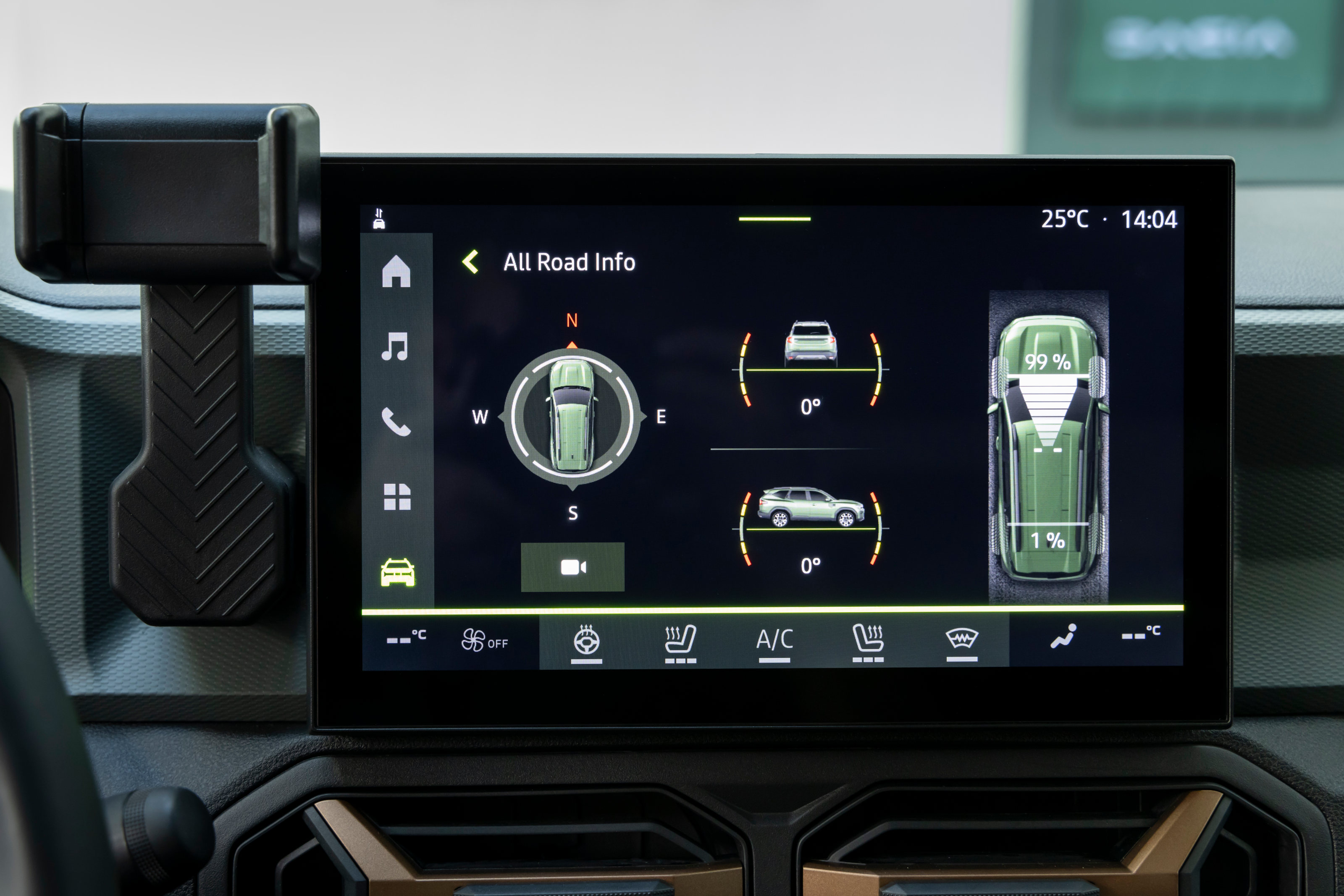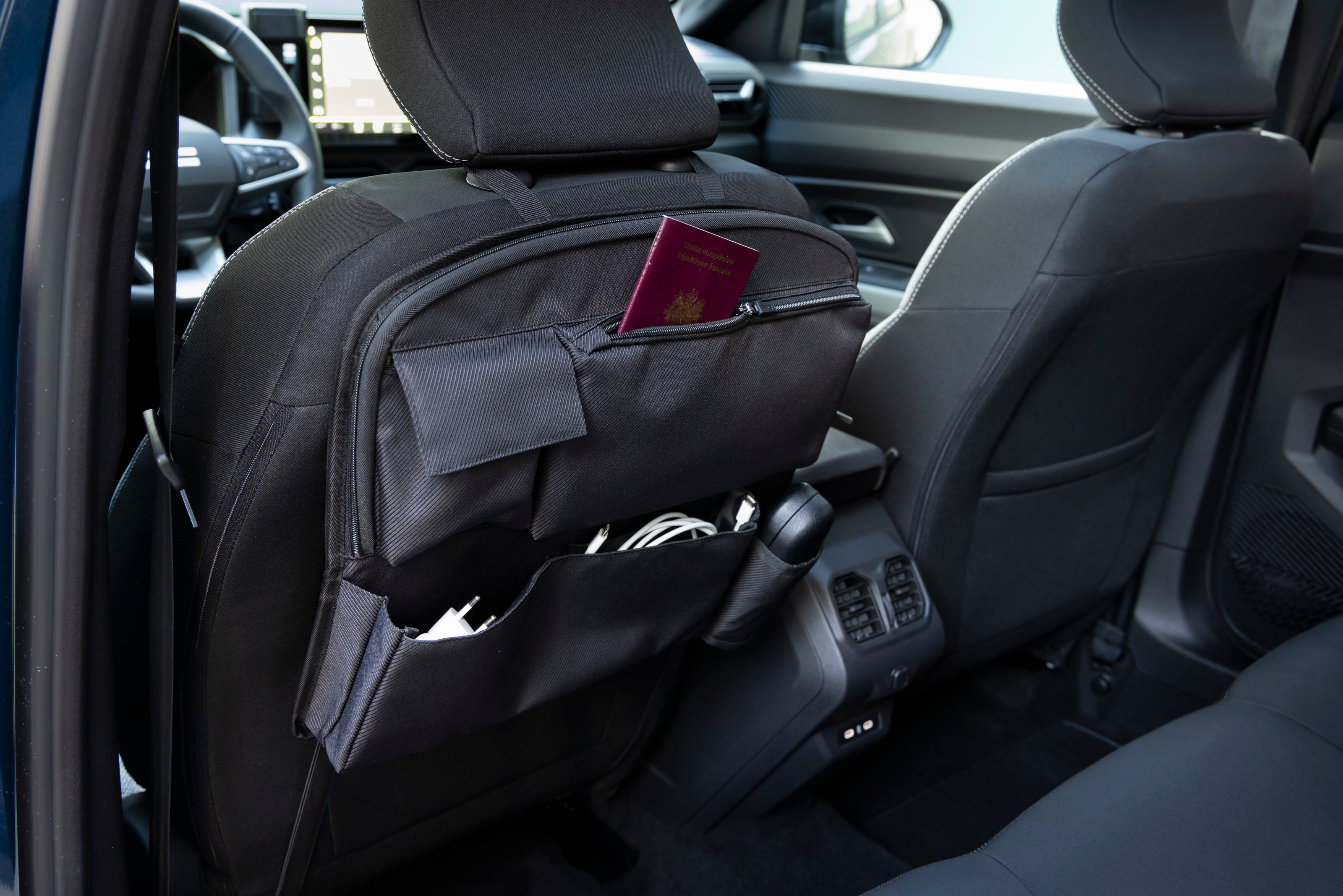The new Dacia Bigster SUV exudes the brand's focus on value, utility and functional design
David Durand, design director at Dacia, tells Wallpaper* about the Dacia Bigster, the car maker’s first full-sized SUV

Wouldn’t it be nice to have a big SUV that’s not an overt status symbol? Revealed at this year’s Paris Motor Show, the Dacia Bigster is hopefully that car, a full-size SUV that combines the brand’s winning no-nonsense design strategy with a simple, solid design language, ultra-functional interior and a classy approach to classlessness. It’s a value brand that is reflecting the changing definition of value.

The new Dacia Bigster SUV
Following hot on the heels of the much admired third generation Dacia Duster, a B+ segment car that has won plaudits from many, the new Bigster is a first step to a bigger scale. A handsome SUV, available in both ICE and PHEV variants, perhaps the only thing the Bigster gets wrong is its rather Dr Zeuss-like name, which feels at odds with its pragmatic Tonka Toy toughness.

The new Dacia Bigster SUV

The new Dacia Bigster SUV
We spoke to Dacia’s design director David Durand about the origins of the Bigster, and what it means to steer the aesthetic approach of a company that prides itself on value, robustness and simplicity.

Headlight design detail on the new Dacia Bigster SUV
Wallpaper*: How does the new Bigster fit into Dacia’s model strategy?
David Durand: We needed to expand in the C-segment market, which is the biggest in Europe. This means new proportions for us, new dimensions, new customers and new expectations. It was all about how to apply the Dacia recipe to this segment.

Dashboard, the new Dacia Bigster SUV
W*: What are the ingredients for this recipe?
DD: One of our key elements is roominess – you have to have good internal space. The car is 4.6m long, with a long wheelbase, and we had to balance those proportions. I often say that proportion and stance are 60 or 70 per cent of the initial impact you get when you look at a car’s design. It gives you a good feeling if you like this stance.
Receive our daily digest of inspiration, escapism and design stories from around the world direct to your inbox.

The new Dacia Bigster SUV is a capable 4x4
W*: Is the Bigster related to the Duster?
DD: They share elements. Both cars were developed in parallel. With the Bigster, you’ll see that we have set the windscreen back to better integrate the rear overhang and longer wheelbase. The horizontal bonnet gives the car a stable, solid look. We have large 19-inch wheels as well.

The new Dacia Bigster SUV
W*: What other Dacia qualities does the design exhibit?
DD: A good thing about getting the proportions right is that you need less ‘make-up’ to cover the faults. Those are the things that cost money. We avoid decoration and brightwork – things that are ‘busy’. Overall, it’s a logical, simple design with very geometric shapes. There’s less black plastic than on the Duster. This came out of our customer clinics in Germany, which really helped refine the car.

The new Dacia Bigster SUV sits on 19-inch wheels
W*: Was there any crossover with the 2022 Manifesto Concept?
DD: That was completed before this project, but it certainly helped us refine our choices. Elements like the modular accessory system that we have on the Duster and Spring models started with that concept. The interior is very important. The roof is 35mm higher than the Duster and there’s a high console for storage. Our seven-seater model is the Jogger, so the Bigster has five-seats, but a lot of space. The 667-litre trunk is the best in class.

The new Dacia Bigster SUV has a capacious interior
W*: How does the Bigster perform car off-road?
DD: We like to keep our promises, so we wanted our first big SUV to be capable. I think the Duster is perhaps more compact and agile, but the Bigster has four-wheel-drive and high ground clearance. It’s a super honest design, the perfect car for a cross-country trip, up into the mountains.

Functionality and practicality are core Dacia values
W*: Was it a natural step for Dacia to create a true utility SUV?
DD: Utility and function are things we really pushed for. It’s clearly a challenge moving into this segment, but we’re now at the right point in our brand development. I think it would have been wrong to do it too early. We have more trust among customers, for example, people seem to have a different image of Dacia. As cars get more and more expensive, we want people to consider us instead of spending maybe 20 per cent more on another brand.

The new Dacia Bigster SUV
Dacia Bigster, available early 2025, more information at Dacia.co.uk
Jonathan Bell has written for Wallpaper* magazine since 1999, covering everything from architecture and transport design to books, tech and graphic design. He is now the magazine’s Transport and Technology Editor. Jonathan has written and edited 15 books, including Concept Car Design, 21st Century House, and The New Modern House. He is also the host of Wallpaper’s first podcast.
-
 Vincent Van Duysen and Zara unveil a sophisticated new flagship concept in Barcelona
Vincent Van Duysen and Zara unveil a sophisticated new flagship concept in BarcelonaZara Diagonal by Vincent Van Duysen brings the intimacy of a domestic space to the shopping experience
-
 These classic board games are elevated with a creative twist
These classic board games are elevated with a creative twistFrom a leather Snakes and Ladders to a whimsical Noughts and Crosses (plus a few newcomers): browse our edit of the best board games to keep you and your guests entertained this holiday season
-
 Remembering Frank Gehry, a titan of architecture and a brilliant human being
Remembering Frank Gehry, a titan of architecture and a brilliant human beingLong-time Wallpaper* contributor Michael Webb reflects on the legacy of the Los Angeles architect, who died today at age 96